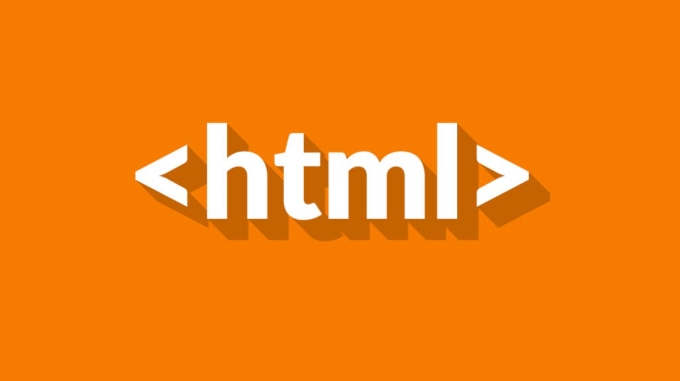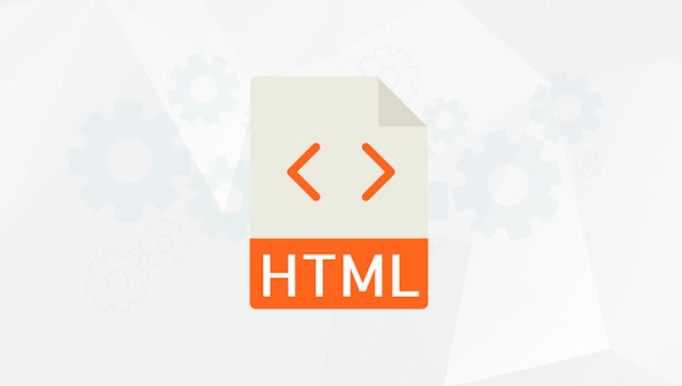inputmode is an attribute in HTML that prompts the mobile terminal to display a specific virtual keyboard type. It does not change the input format but improves the experience. Common values include text, tel, url, email, numeric, and decimal. They are suitable for different scenarios, such as tel for phone numbers, decimal for amounts, and numeric for quantity, and keep text in the search box. When using it, you need to pay attention to the difference between it and type. Inputmode is more suitable for scenarios where only the keyboard type is controlled without changing the input behavior. It can optimize the input effect with pattern, but it cannot be replaced by single verification, and excessive use should be avoided.

When doing form input optimization, many people ignore the inputmode attribute of HTML. In fact, it has a great impact on the mobile experience, especially in different input scenarios, which can help users enter content faster and more accurately.

What is inputmode ?
inputmode is an attribute in HTML that prompts the browser to display which type of virtual keyboard on the mobile side. It will not change the format of the input content, it will only control the keyboard type and improve the user experience.
For example, when you want the user to enter numbers, you can set inputmode="numeric" so that the number keyboard will pop up directly when the user opens the input box instead of the full keyboard.

Common supported values include:
-
text(default) -
none -
tel -
url -
email -
numeric -
decimal
When should I use inputmode ?
Not all inputs are worth using inputmode , but they are very useful in certain scenarios. Here are some common use cases:

- Phone number input : Use
inputmode="tel"to pop up a keyboard with numbers and special symbols to facilitate input of mobile phone numbers. - Amount input : Use
inputmode="decimal"to make it easier for users to enter prices with decimals. - Quantity selection : For example, when purchasing quantity, use
inputmode="numeric"to display only the numeric keyboard. - Search box or username input : Keep
inputmode="text"without restricting the user input method.
Note:
inputmodeis not a replacement for form verification. It is just a "suggested" keyboard type and does not guarantee that the user is entering legitimate data.
What's the difference between type attributes?
Many people will confuse inputmode and type . They can all affect the keyboard display, but there are obvious differences:
-
type="number"will force the numeric keyboard to pop up, but may also bring the browser's default up and down arrow controls, which sometimes affects the experience. -
inputmode="numeric"only controls the keyboard type and does not change the behavior of the input box. It is more suitable for scenarios where pure numbers are needed but do not want to bring controls.
For example:
<!-- Recommended for pure digital input--> <input type="text" inputmode="numeric" pattern="[0-9]*" /> <!-- The default will be up and down arrows--> <input type="number" />
If you want to control keyboard types more granularly without affecting input behavior, give priority to inputmode .
Things to note in actual use
- Compatibility issues : Currently, mainstream browsers basically support it, but the performance on iOS and Android is slightly different. For example,
decimalmay display a numeric keyboard on some systems, rather than a decimal version. - It is better to use with
pattern: for example, withpattern="[0-9]*"you can further optimize the input experience on some devices. - Don't overuse : unless the input content is clear, there is no need to add
inputmodeto each input box.
Basically that's it. Using inputmode well can improve the mobile form experience. Although the details are small, they are indeed useful.
The above is the detailed content of HTML `inputmode` for Specific Input Types. For more information, please follow other related articles on the PHP Chinese website!

Hot AI Tools

Undress AI Tool
Undress images for free

Undresser.AI Undress
AI-powered app for creating realistic nude photos

AI Clothes Remover
Online AI tool for removing clothes from photos.

Clothoff.io
AI clothes remover

Video Face Swap
Swap faces in any video effortlessly with our completely free AI face swap tool!

Hot Article

Hot Tools

Notepad++7.3.1
Easy-to-use and free code editor

SublimeText3 Chinese version
Chinese version, very easy to use

Zend Studio 13.0.1
Powerful PHP integrated development environment

Dreamweaver CS6
Visual web development tools

SublimeText3 Mac version
God-level code editing software (SublimeText3)
 Applying Semantic Structure with article, section, and aside in HTML
Jul 05, 2025 am 02:03 AM
Applying Semantic Structure with article, section, and aside in HTML
Jul 05, 2025 am 02:03 AM
The rational use of semantic tags in HTML can improve page structure clarity, accessibility and SEO effects. 1. Used for independent content blocks, such as blog posts or comments, it must be self-contained; 2. Used for classification related content, usually including titles, and is suitable for different modules of the page; 3. Used for auxiliary information related to the main content but not core, such as sidebar recommendations or author profiles. In actual development, labels should be combined and other, avoid excessive nesting, keep the structure simple, and verify the rationality of the structure through developer tools.
 Implementing Clickable Buttons Using the HTML button Element
Jul 07, 2025 am 02:31 AM
Implementing Clickable Buttons Using the HTML button Element
Jul 07, 2025 am 02:31 AM
To use HTML button elements to achieve clickable buttons, you must first master its basic usage and common precautions. 1. Create buttons with tags and define behaviors through type attributes (such as button, submit, reset), which is submitted by default; 2. Add interactive functions through JavaScript, which can be written inline or bind event listeners through ID to improve maintenance; 3. Use CSS to customize styles, including background color, border, rounded corners and hover/active status effects to enhance user experience; 4. Pay attention to common problems: make sure that the disabled attribute is not enabled, JS events are correctly bound, layout occlusion, and use the help of developer tools to troubleshoot exceptions. Master this
 Configuring Document Metadata Within the HTML head Element
Jul 09, 2025 am 02:30 AM
Configuring Document Metadata Within the HTML head Element
Jul 09, 2025 am 02:30 AM
Metadata in HTMLhead is crucial for SEO, social sharing, and browser behavior. 1. Set the page title and description, use and keep it concise and unique; 2. Add OpenGraph and Twitter card information to optimize social sharing effects, pay attention to the image size and use debugging tools to test; 3. Define the character set and viewport settings to ensure multi-language support is adapted to the mobile terminal; 4. Optional tags such as author copyright, robots control and canonical prevent duplicate content should also be configured reasonably.
 Best HTML tutorial for beginners in 2025
Jul 08, 2025 am 12:25 AM
Best HTML tutorial for beginners in 2025
Jul 08, 2025 am 12:25 AM
TolearnHTMLin2025,chooseatutorialthatbalanceshands-onpracticewithmodernstandardsandintegratesCSSandJavaScriptbasics.1.Prioritizehands-onlearningwithstep-by-stepprojectslikebuildingapersonalprofileorbloglayout.2.EnsureitcoversmodernHTMLelementssuchas,
 How to associate captions with images or media using the html figure and figcaption elements?
Jul 07, 2025 am 02:30 AM
How to associate captions with images or media using the html figure and figcaption elements?
Jul 07, 2025 am 02:30 AM
Using HTML sums allows for intuitive and semantic clarity to add caption text to images or media. 1. Used to wrap independent media content, such as pictures, videos or code blocks; 2. It is placed as its explanatory text, and can be located above or below the media; 3. They not only improve the clarity of the page structure, but also enhance accessibility and SEO effect; 4. When using it, you should pay attention to avoid abuse, and apply to content that needs to be emphasized and accompanied by description, rather than ordinary decorative pictures; 5. The alt attribute that cannot be ignored, which is different from figcaption; 6. The figcaption is flexible and can be placed at the top or bottom of the figure as needed. Using these two tags correctly helps to build semantic and easy to understand web content.
 HTML for email templates tutorial
Jul 10, 2025 pm 02:01 PM
HTML for email templates tutorial
Jul 10, 2025 pm 02:01 PM
How to make HTML mail templates with good compatibility? First, you need to build a structure with tables to avoid using div flex or grid layout; secondly, all styles must be inlined and cannot rely on external CSS; then the picture should be added with alt description and use a public URL, and the buttons should be simulated with a table or td with background color; finally, you must test and adjust the details on multiple clients.
 What are the most commonly used global attributes in html?
Jul 10, 2025 am 10:58 AM
What are the most commonly used global attributes in html?
Jul 10, 2025 am 10:58 AM
class, id, style, data-, and title are the most commonly used global attributes in HTML. class is used to specify one or more class names to facilitate style setting and JavaScript operations; id provides unique identifiers for elements, suitable for anchor jumps and JavaScript control; style allows for inline styles to be added, suitable for temporary debugging but not recommended for large-scale use; data-properties are used to store custom data, which is convenient for front-end and back-end interaction; title is used to add mouseover prompts, but its style and behavior are limited by the browser. Reasonable selection of these attributes can improve development efficiency and user experience.
 How to handle forms submission in HTML without a server?
Jul 09, 2025 am 01:14 AM
How to handle forms submission in HTML without a server?
Jul 09, 2025 am 01:14 AM
When there is no backend server, HTML form submission can still be processed through front-end technology or third-party services. Specific methods include: 1. Use JavaScript to intercept form submissions to achieve input verification and user feedback, but the data will not be persisted; 2. Use third-party serverless form services such as Formspree to collect data and provide email notification and redirection functions; 3. Use localStorage to store temporary client data, which is suitable for saving user preferences or managing single-page application status, but is not suitable for long-term storage of sensitive information.






